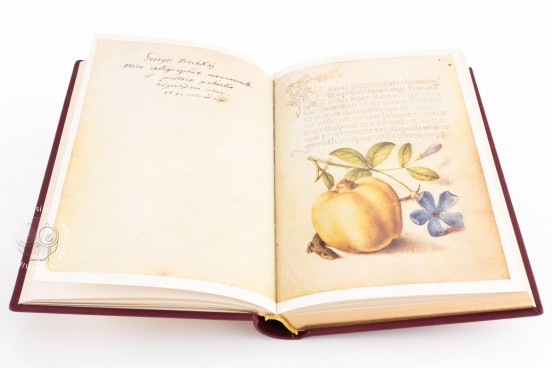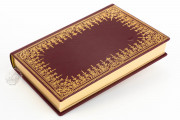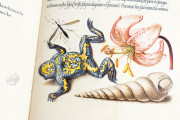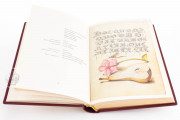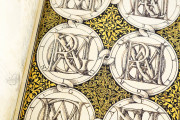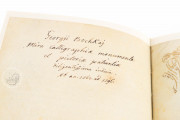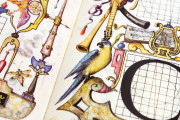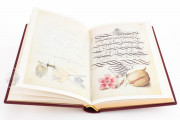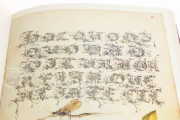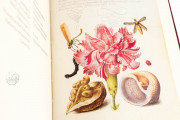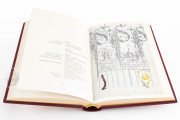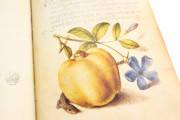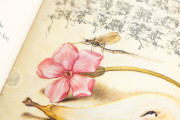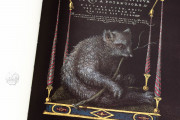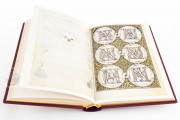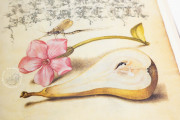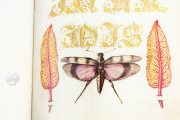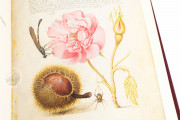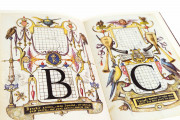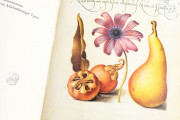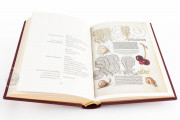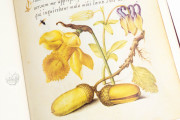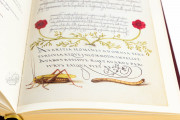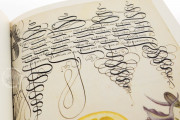A unique achievement in the history of manuscript illumination, the Model Book of Calligraphy was produced in Vienna, Austria, in the second part of the sixteenth century. The volume, made up of 123 parchment folios and 4 paper folios, is the result of a rare collaboration between a scribe and a painter, who penned and illuminated the manuscript nearly thirty years apart. The creation of this volume involved two different patrons: Holy Roman Emperor Ferdinand I and his grandson Emperor Rudolph II.
Measuring 16.6 x 12.4 cm, the Model Book of Calligraphy was masterfully penned with ink on parchment and paper and illuminated with tempera colors, watercolors, gold and silver paint.
Two Commissioners, Two Hands
Also known as Mira calligraphiae monumenta, the manuscript was first commissioned by Ferdinand I, who asked his court secretary Georg Bocskay to devise a model book of calligraphy as proof of the universal power of the written word in the past and present time. Bocksay put together a collection of contemporary and historical scripts with the purpose of showing their beauty and grandiosity.
Almost thirty years had gone by since Bocksay first laid hands on the precious manuscript, when Emperor Rudolph II decided to have it decorated by one of his trusted court painters, Flemish illuminator Joris Hoefnagel.
The Roots of Netherlandish Still Life Painting
From 1591 until 1596, Hoefnagel filled almost every blank space with images of flowers, insects, fruits, small animals, and of the bones, fossils, and shells he found in the Emperor’s cherished cabinet of curiosities (Kunstkammer). Hoefnagel, one of Europe's last great illuminators, painted each page with unbelievable detail, intense shading, and rich, highly saturated colors.
Lobsters, chestnuts, horseflies, and seashells are only some of the objects that Hoefnagel represented with breathtaking precision, and which later influenced Nederlandish still-life painters. Together with his accurate depictions of nature, the Flemish painter also added to the manuscript a section on building the letters of the alphabet in upper- and lowercase.
From an Emperor's Library to a World Leading Art Museum
After the death in 1612 of its second patron, Holy Roman Emperor Rudolf II, the manuscript passed on to the Austrian engineer and metalsmith Albert Milde. By 1916 the Model Book of Calligraphy belonged to the German art collector Friedrich Ludwig von Gans.
The Frankfurt crown jeweler Louis Koch owned the book until 1930. The manuscript was stored in a private collection from 1942 until 1986, when it was sold through Richard Day and John Baskett Ltd. to the J. Paul Getty Museum.
We have 1 facsimile edition of the manuscript "Model Book of Calligraphy": Mira Calligraphiae Monumenta facsimile edition, published by Faksimile Verlag, 1993
Request Info / Price
